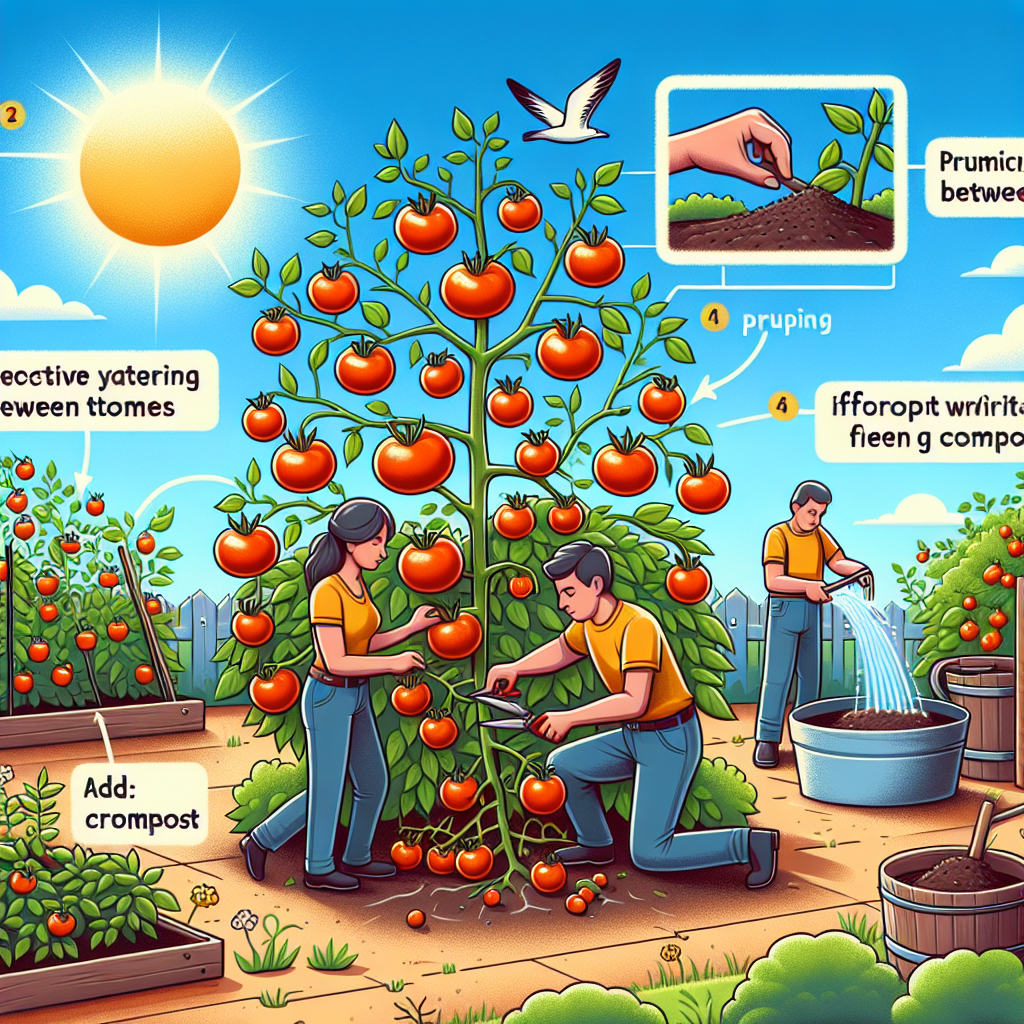
How to make cherry tomato plants produce more fruit
Unlocking the Secrets to Bountiful Cherry Tomato Harvests
Cherry tomatoes are a beloved garden staple for many home gardeners and culinary enthusiasts alike. Their vibrant colors, rich flavors, and versatility in dishes make them a favorite. However, growing these succulent fruits can sometimes be challenging, especially when it comes to maximizing their yield. You might find yourself wondering how to make cherry tomato plants produce more fruit. The good news is that with the right techniques and knowledge, you can enhance your garden's productivity significantly. In this article, we’ll explore the various factors that influence fruit production in cherry tomato plants and provide actionable tips to help you achieve a hearty harvest.
1. Choosing the Right Variety
To set yourself up for success, it's essential to start with the right variety of cherry tomato. There are many types available, and some are known for higher yields than others. When selecting your seeds or seedlings, consider the following:
- Determinate vs. Indeterminate: Determinate varieties tend to produce fruit all at once and are often easier to manage, while indeterminate varieties produce fruit throughout the growing season.
- Climate Suitability: Choose varieties that are well-adapted to your local climate conditions.
- Pest Resistance: Some varieties are bred to resist common pests and diseases, which can ultimately enhance yield.
2. Soil Quality: The Foundation of Your Plants
Soil quality plays a vital role in plant health and productivity. Cherry tomato plants thrive in well-draining, nutrient-rich soil. Here are some tips to improve your soil:
- Test Soil pH: Cherry tomatoes prefer a slightly acidic to neutral pH of around 6.0 to 7.0. Test your soil and amend as necessary.
- Organic Matter: Incorporate compost or well-rotted manure into the soil to increase fertility and drainage.
- Nutrients: Use a balanced fertilizer, or one that is higher in potassium and phosphorus (e.g., a 5-10-10 ratio) to encourage fruit development.
3. Optimal Sunlight Exposure
Cherry tomatoes are sun-loving plants that require plenty of light to produce fruit effectively. Aim for:
- Full Sun: Ensure your plants receive at least 6-8 hours of direct sunlight each day.
- Consider Location: Position tall plants away from your cherry tomatoes to avoid shading them.
4. Watering Practices: Balance is Key
Watering is one of the most critical aspects of growing cherry tomatoes. Both overwatering and underwatering can negatively impact fruit production. Follow these guidelines:
- Consistent Moisture: Aim to keep the soil consistently moist but not waterlogged.
- Deep Watering: Water deeply once or twice a week rather than frequent shallow watering to promote deep root growth.
- Mulching: Apply a layer of mulch around the base of the plants to retain moisture and regulate soil temperature.
5. Pruning and Support for Healthier Plants
Pruning is an essential practice for encouraging robust growth and fruit production. Here’s how to do it effectively:
- Remove Suckers: Regularly remove suckers (the small shoots that grow between the main stem and branches) to direct the plant's energy into fruit production.
- Support Your Plants: Use cages or stakes to provide support, preventing branches from breaking and allowing better air circulation.
6. Fertilizing for Increased Yield
Fertilization is crucial in encouraging more vigorous growth and fruit set. Optimal fertilization practices include:
- Initial Feeding: Apply a slow-release fertilizer at planting time to provide the necessary nutrients as the plant grows.
- Monthly Boost: Feed your plants with a balanced liquid fertilizer every 4-6 weeks throughout the growing season. Look for fertilizers with a higher middle number (P) to promote flowering and fruit set.
7. Pest and Disease Management
Regularly monitor your plants for signs of pests and diseases, as they can drastically reduce yield. Here are some strategies for effective management:
- Regular Inspections: Check for aphids, whiteflies, and spider mites, and address any issues promptly.
- Organic Remedies: Use neem oil or insecticidal soap as organic treatments for pest problems.
- Companion Planting: Plant marigolds or basil among your tomatoes to deter pests naturally.
By carefully managing pests, you’ll reduce stress on your plants and help them focus on producing delicious fruit.
8. Harvesting: Timing is Everything
Finally, when it comes to harvesting your cherry tomatoes, timing can influence the plant's productivity. Here’s how to optimize your harvest:
- Pick Regularly: Harvesting tomatoes when they are ripe encourages the plant to produce more fruit.
- Handle with Care: Gently twist and pull each tomato to avoid damaging the plant or other fruits.
- Monitor Color Changes: Look for color changes as a sign of readiness; harvesting too late can lead to overripening and reduced harvests.
9. Additional Strategies to Boost Yield
In addition to the primary factors already discussed, consider the following advanced strategies:
- Temperature Control: Protect your plants from extreme temperatures by providing shade during hot spells and covering them during cold snaps.
- Hand Pollination: In cases of decreased pollinator activity, gently shake the plants or use a small brush to transfer pollen between flowers.
- Sequential Planting: Stagger your planting dates to ensure a continuous harvest throughout the growing season.
Conclusion: Embrace Your Cherry Tomato Adventure
Growing cherry tomatoes can be a rewarding endeavor when equipped with the right knowledge and techniques. Remember, enhancing your garden’s yield involves several factors, including variety selection, soil quality, watering practices, and pest management. By implementing these tips and being attentive to your plants' needs, you'll be well on your way to enjoying a bountiful cherry tomato harvest that makes your culinary creations shine.
With time, experience, and a little effort, you’ll soon discover not just how to make cherry tomato plants produce more fruit, but also the joy of gardening and the satisfaction of nurturing your food from seed to table. Happy gardening!
By Guest, Published on October 2nd, 2024